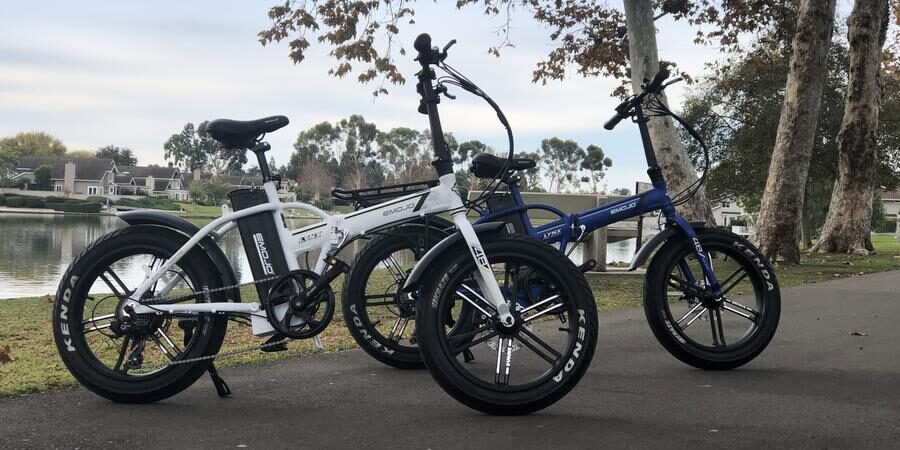When it comes to automobiles and electronics, there’s no shortage of things that seem outdated. With the best automotive technology changing at such a rapid pace and new technological developments springing up every other day, it can be difficult to figure out which technologies are worth investing in. This is especially true when it comes to electric bicycles.
On one hand, e-bikes have a number of glaring issues that keep them from being taken seriously by many consumers and even experts in the field. On the other hand, there are plenty of exciting developments that indicate e-bikes are only getting more popular than ever before.
If you’re not sure where you stand on this issue or what an e-bike is exactly, then you’ll want to read on for a detailed explanation of what an e-bike is, its advantages over non-electric bicycles and its key limitations as well as some helpful tips for buying one if you decide they’re right for you.
What is an E-Bike?
An electric bike is a bicycle that has an electric motor used to power the vehicle. They offer a number of advantages over traditional bicycles, including increased speed and stability, less wear and tear on the frame, and no need to buy fuel for the bike. Electric bikes are becoming more popular thanks to their ability to reduce physical strain on the rider and increase reliability.
Advantages of an E-Bike
An electric bike is a vehicle that uses electrical power for propulsion and has two or three wheels. It does not have a combustion engine and gets its energy from an electric motor. Electric bikes are typically powered by lithium-ion batteries that can be charged using a wall outlet and can last anywhere from 2 hours to 80 miles on one charge.
Electric bicycles offer a number of advantages over non-electric bicycles that make them more attractive to consumers and experts alike. One of the primary advantages is that they’re much easier to use than their gas-powered counterparts. They don’t require any fuel, which means you don’t need to worry about having enough money in your tank when you want to go for a ride.
Additionally, e-bikes are easier on the environment than gasoline-powered vehicles because they produce significantly fewer emissions. Because of this, you can get around with less stress to both your wallet and the environment by swapping your gas bicycle for an e-bike if you wanted to do so.
E-bikes also offer better performance than traditional bicycles because they provide more momentum per rotation thanks to their electric motors, allowing them to reach speeds up to 20 mph without pedaling as hard or without going downhill where it would be harder for them to perform well.
This means that an e-bike has greater range than other types of bicycles, making them much more efficient when used as transportation while still allowing riders unparalleled control over their speed and performance with pedal
Limitations of an E-Bike
While an e-bike is a convenient way to get around, it is important to note that it does come with some limitations. Some of the major drawbacks that come along with e-bikes are their inability to travel on trails and uneven terrain and the fact that they don’t have a lot of power.
While these limitations may sound like deal breakers, they are not in most cases. It is important to evaluate the needs of your specific situation in order to decide whether or not e-bikes are right for you or if you should look into buying another type of bicycle instead.
A good rule of thumb, however, is this: if you spend a lot of time riding on trails or rough terrain, then an e-bike might not be for you because it won’t allow for as much flexibility as other types of bicycles.
On the other hand, if you spend a lot of time commuting through traffic where your options are limited, then an e-bike could be exactly what you need. They also make for a good mode of transportation for people who live in areas where having a car would be impractical due to lack of parking spots or environmental factors.
Key differences between e-bikes and non-electric bicycles
An e-bike is an electric bike or bicycle that uses a battery to power the motor. They are typically made with lightweight materials that have been designed specifically for their weight, which makes them easier to handle and ride.
E-bikes also tend to be more expensive than non-electric bicycles, but they are able to offer a larger range due to the reduced need for mechanical components like gears and brakes. However, these advantages do come with some downsides. Non-electric bikes don’t need you to pedal in order for them to move like an e-bike does.
They also use less electricity than e-bikes, which means they won’t cover as much ground in their battery life and might not go as fast either. In addition, non-electric bikes don’t have this extra weight and can easily go over curbs and around obstacles without any problem at all.
How to Buy an Electric Bicycle
An electric bicycle is a vehicle that has been converted from a traditional non-electric bike. It’s powered by an electric motor and allows you to pedal, just like a regular non-electric bike would.
Electric bicycles are designed for easy usability and convenience, so you can use your e-bike on a daily basis. The first step when buying an electric bicycle is deciding which type of e-bike you need.
The most common types of e-bikes include folding ones, foldable bikes and those with lightweight frames. There are also multiple power options available, such as pedal assist and throttle. Once you have decided what type of e-bike you want, the next step is finding out how much it will cost.
This can vary depending on the brand, model and other factors so it’s important to do your research before making any purchase decisions. Once you know the price range of your desired e-bike, you can decide whether or not it’s worth the investment for your needs. If the answer is yes, then go ahead and buy one!
Buying Guide for Electric Bikes
The first question you should ask is whether or not an e-bike is right for you. It’s important to understand that owning an e-bike comes with a number of additional responsibilities in addition to the usual ones that come with owning a bicycle. This means that your decision to buy an e-bike should be based on your own needs and not just because it’s trendy.
Another thing to consider is the cost. Though there are many high-quality electric bicycles available for purchase, they won’t come cheap (and this will vary depending on how much money you want to spend).
An e-bike can easily cost hundreds of dollars while a non-electric bike can often be bought for less than $100. The good news is that these costs tend to even out over time as more features become standard and the lifespan of the e-bike increases.
The next thing to consider is what type of electric bicycle you’re interested in buying. There are two main types of e-bikes: traditional and pedal assist bikes. Traditional bikes use primarily human power for propulsion and traditionally don’t include any help from electronics or computer systems at all, but this has changed recently as many manufacturers have begun including pedal assist options that make riding easier or more convenient for people who might otherwise find pedaling too strenuous or difficult. Pedal assist bikes use motors and other electronic systems to provide assistance when needed; some models also allow their rider(s
Final Words: Should You Buy An E-Bike?
Whether you should buy an e-bike is a personal decision that will depend on a number of factors. But as long as you understand the advantages and disadvantages of owning one, you’ll be able to make the most informed decision possible.
One thing is for sure; there are plenty of unique ways in which e-bikes can help people get around within cities and towns. With this in mind, it could be worth giving them a try. If you’re interested in learning more about e-bikes and whether they’re right for you, be sure to check out our FAQ guide on electric bicycles here.
FAQs
What are some of the issues with electric bicycles?
I think the biggest issue with electric bikes is that they are still not very practical for traveling long distances. The weight and lack of gearing mean that you are limited to short bursts of cycling before you have to stop. Even then, carrying heavy loads for long distances isn’t particularly practical.
As for dealing with pedestrians, it can often be difficult to avoid them, especially when turning corners. Many pedestrian crossings have a stop sign in front of them so you have to get very close to the crossing before you can turn.
And if there is no stop sign at the crossing then you do not know how close you need to be before turning. Because they weigh as much as a two-year old child they are not very safe in either city or country traffic. In many places e-bikes are banned on footpaths and cycle lanes which means they cannot be used for commuting or for recreational riding.
What are some of the benefits of electric bicycles?
One of the best things about electric bicycles is their ease of use and fun factor. Their ease of use comes from their intuitive nature and the low maintenance required. It is possible to ride e-bikes regardless of how experienced you are with cycling.
They are also very versatile, allowing you to do various activities such as riding into the park, commuting to work, touring the city, or even just running errands around the neighborhood. When it comes to fun factor, riding e-bikes gives you a sense of freedom that is often missing from other types of bicycles. You can go as fast or as slow as you want, enjoy trails or city streets, and have control over your environment.
There is no better feeling than cruising down a scenic trail on an e-bike with the wind in your face and the sun setting on your left shoulder. Another benefit of e-bikes is their cost efficiency. While electric bicycles come with a higher upfront cost than standard bicycles, they offer long life cycles that result in lower overall costs over time. The widespread availability of charging stations also makes it easy to recharge your e-bike on the go, eliminating any need for inconvenient charging stops at home or work.
Finally, there are some health and fitness benefits that can be obtained from e-bikes that can’t be obtained from regular bicycles. Riding an e-bike allows you to burn more calories because you are using more energy throughout your ride.
You also aren’t restricted by the available road space when riding an e-bike so you can reach places that aren’t easily accessible by car. Even though these reasons are enough to convince anyone that electric bicycles are a worthwhile investment, there are many other benefits as well including environmental friendliness due to reduced carbon emissions and reduced noise pollution through quieter operation.
What are some of the exciting developments for electric bicycles?
The exciting developments in e-bike technology include the continuous improvement in battery life, the addition of human-powered assistance to electric bicycles, the availability of higher capacity batteries, and more stable power supplies.







